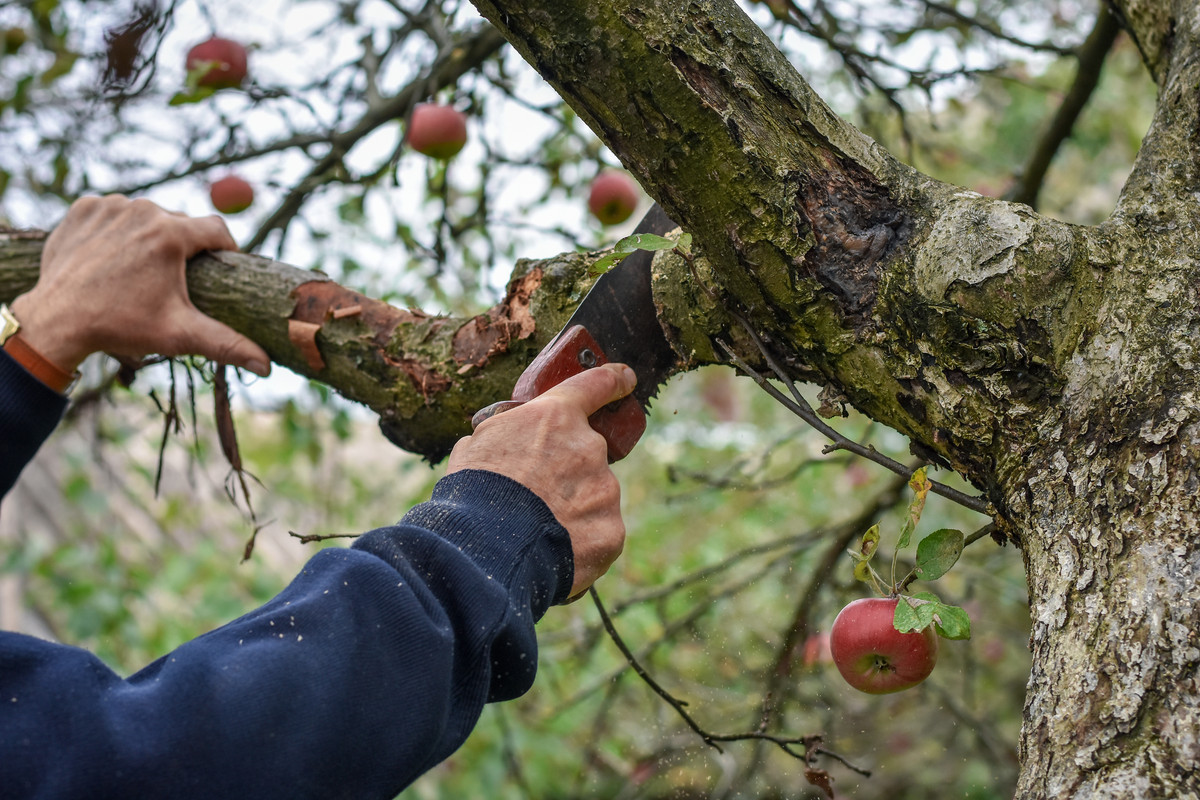The Basics Of Tree Care
by siteadmin

The field of tree care focuses on the practical application of arboricultural methods to the built environment. This includes backyards, greenways, parks, and road verges. Tree care specialists use a wide variety of tools and techniques to keep a variety of trees healthy and thriving. To learn more about how to care for trees, check out our article on pruning and tree topping. We'll also talk about using insecticides and mulch.
Pruning
Proper pruning is an important part of tree care, and it should be included in every tree-care routine. Proper pruning will encourage strong growth, enhance the appearance of your trees, and increase fruit and flower production. When pruning, make sure to remove any dead, diseased, or damaged limbs. Pruning can kill a healthy tree, so it's important to carefully assess the health of your trees before beginning your pruning project.
The best way to prune a tree safely is to follow the growth cycle. Young trees, especially, do not require much pruning, but mature trees can be hazardous if pruned improperly. If your tree is close to a power line, call a professional to prune it safely. They are trained in proper pruning techniques. Also, remember that the power company should be called in when pruning trees and power lines. The power company must follow the appropriate safety methods.
When pruning landscape trees, avoid making any drastic changes. A good pruning process should leave the tree in a pleasing form, limiting the number of cuts. Remove secondary and inward-growing branches. Make sure there are no more than two branches at the same height. Vertical spacing should be eight to 16 inches. After pruning, remove dead limbs, if applicable. Afterward, remove all branches that are too close to the ground.
After pruning your tree, make sure to follow the proper growth cycle. A healthy tree requires pruning regularly, so do not cut back more than necessary. Remember to cut back to a twig, branch, or bud. Cutting back to a twig or bud encourages healthy new growth. If you cut a twig, it can never be put back. It's better to remove the dead branches than to make them look ugly.
Before pruning, make sure you remove all dead, diseased, or damaged branches. Doing so can cause further damage and even attract insects. Dead branches removed in winter can also cause "bleeding trees" – a phenomenon when a tree's sap stops flowing. Pruning during this time is safe because sap will no longer be flowing. This sap will eventually dry and the tree will be free of sap. A good rule of thumb when pruning is to prune no more than a third of the new growth.
Tree Topping
When a tree is topped, its growth rate increases exponentially. This is due to the growth of water sprouts, which grow four to ten times faster than normal branches. As a result, cutting off the top of a tree will result in the formation of thousands of new water sprouts that will rapidly multiply in size. Once cut, these water sprouts will continue to grow exponentially until they reach the height of the original tree.
If not done carefully, this method can cause severe damage and even kill the tree. Topping a tree can cause the entire tree to become stressed and unhealthy. Not only does it destroy the natural look of the tree, but it can also interfere with electrical wiring and other infrastructure, and it can lead to decay and infestation. Therefore, it is vital to refrain from using this practice. Instead, seek professional help from a tree care expert who will help you determine the best approach to take.
While trees are beautiful additions to a property, the practice of topping them can cause the tree to look unattractive and unsafe. Trees cannot defend themselves against decay when they are topped, which results in a gnarly and unattractive shape. In addition to looking unattractive, topped trees can also lead to decreased property value, which is something that homeowners want to avoid. Also, it may lead to other negative effects that can have a major impact on the property.
Topping leaves large open wounds that can become susceptible to disease and insect infestation. Without leaves, trees cannot properly produce energy for photosynthesis. The leaves also carry starches to the tree's roots, making it susceptible to sunscald and decay fungi. In addition, the removal of a tree's leafy crown also has negative effects on neighboring trees. It is also not possible for a tree to recover its natural shape after being topped.
Another practice of pruning is known as tree topping, which involves removing large branches and leaving the lateral branches and stumps. While it may seem like a safe and effective way to reduce the size of a tree, it can cause more problems in the long run. Tree topping is not the right choice in most cases. A tree can only take a few years to reach the height you desire, so it's better to do it right the first time.
Insecticides
There are several types of insecticides used in tree care. Systemic insecticides are best used on growing trees and are available in both liquid and dry granule forms. Generally speaking, systemic insecticides are best used when the trees are actively growing and have a high risk of attracting pests. Reliable tree care offers tips for controlling pests and preparing trees for next spring. Read on to learn about the different types of insecticides available in the market.
Insecticides can be applied to the bark, twigs, and leaves of trees and can be extremely effective in controlling a variety of pests. Leaf-eating beetles can cause significant defoliation to your tree, so you need to keep them under control. Professionals can also soil-inject the insecticide acephate to prevent infestations. But even if the insecticides are effective, the timing is key.
Insecticides are best used when they are applied regularly. Systemic insecticides work very effectively against key pests of ornamental landscape trees. Insecticides are easy to apply and give one year's worth of protection. However, the amount of work required is limited. Generally, the best type of insecticide is a combination of two types. If the problem is not as severe as pests such as aphids, use a systemic insecticide to control the problem.
Besides these, you may also have to be concerned about the appearance of pests on your tree. Insects like twigs and branch pruners can disfigure young trees and destroy entire trees. To avoid them, you need to spray the affected branches regularly. A good solution is to use an insecticide in early April. However, this may not be enough as some species can also live in the sapwood of the tree.
You can also spray tree trunks and limbs with specific insecticides to control pests.
Mulch
The benefits of mulch for tree care are many. Not only does mulch conserve moisture, but it also helps regulate the soil's temperature and prevents weeds. It also looks nice. However, it is important to avoid over-mulching trees, as this can result in damage or even death. Use a 3-inch to 4-inch layer of mulch around your trees. To apply mulch to your trees, spread it out a minimum of three feet around the trunk.
There are two main types of mulch: organic and inorganic. Inorganic mulches are made of plastic film or landscape fabric. These are used primarily for decorative or weed-control purposes. Organic mulches contain decaying plant material. Hence, they are the preferred choice for trees and shrubs in urban landscapes. The benefits of organic mulches are numerous. They improve the soil's structure and fertility.
In addition to mulching, you can also use compost and other decomposed food to improve the drainage of your soil. These two types of mulch improve the air quality and provide a nutrient reserve for your trees. These mulches are free and available at local tree supply stores. When applying mulch to your trees, be sure to measure the depth of your current mulches before starting the application process. A depth of two to four inches is a recommended range for mulching your trees. If the soil is poorly drained, reduce this depth.
Organic matter, or mulch, is the main ingredient of forest soils. It not only adds nutrients and organic matter to the soil but also reduces compaction and helps prevent grass from growing under the trees. It also protects the roots from excessive heat and keeps the soil moist. This prevents the roots of trees from drying out or freezing. A mulched forest is a more aesthetically pleasing area in your yard.
Wood mulch should be spread around the tree in a circle, with a radius of at least nine inches. Be sure to mulch the tree roots only, not the trunk, so that they don't get damaged. Wood mulch should be refreshed annually, more frequently in hotter climates. When removing wood mulch, make sure to remove it before tree blossoms. Arborists recommend organic mulches for their benefits. Organic mulches will decompose and provide benefits for your tree when it decomposes. They will also help to keep your tree's roots moist.
CATEGORY: Tree Service
TAGS: tree care, stump grinding companies, stump grinding professionals, tree grinding, tree removal
The field of tree care focuses on the practical application of arboricultural methods to the built environment. This includes backyards, greenways, parks, and road verges. Tree care specialists use a wide variety of tools and techniques to keep a variety of trees healthy and thriving. To learn more about how to care for trees, check…
Recent Posts
- Affordable Fencing Solutions: Fence Company Rochester NY Offers Insight on the Cheapest Fence Installations in Rochester, NY
- Affordable Fencing Solutions: Fence Company Rochester NY Offers Insight on the Cheapest Fence Installations in Rochester, NY
- Expert Roofers Columbus Shares Insights on the Roofing Installation Process in Columbus, GA
- Mastering Tree Removal: A Comprehensive Guide for Tree Care in Fairfax
- Mastering Tree Removal: A Comprehensive Guide for Tree Care in Fairfax
